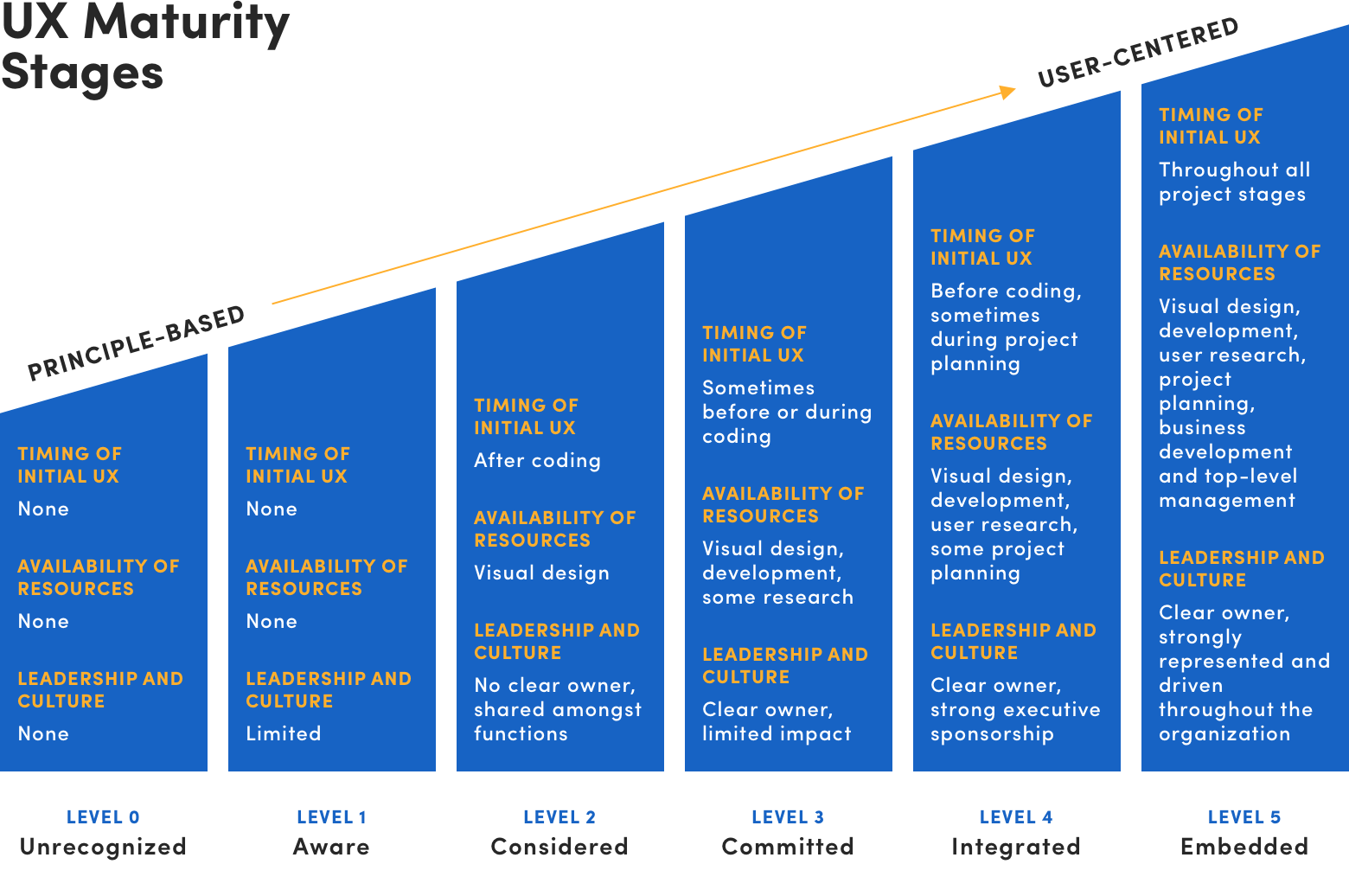No. 12: Leadership and Maturity

In the summer of 1953, explorer and philanthropist Edmund Hillary became a pioneer within the mountaineering community when he successfully summited Mount Everest. It was the first time climbers had ever ascended the 29,000-foot peak and lived to tell the tale.
The trek, however, wouldn't have been possible had Hillary embarked on the journey alone. With him was his climbing companion and sherpa Tenzing Norgay, a Nepalese mountaineer who played an integral role in the expedition's success.
The two relied heavily on each other's complementary skills and experience to reach the summit. While Hillary had the equipment and financial backing to make the trip possible, Norgay knew the mountain and its surrounding wilderness better than Hillary ever could. Norgay's expertise played an integral role in the success of Hillary's mission.
Norgay and Hillary both understood what many organizations are just beginning to recognize...
Groundbreaking achievements aren't possible without the passion, expertise and creativity of multiple people willing and able to work together as a team.
Most importantly, however, it's the inherent leadership skills and maturity that each team member possesses that makes innovative work possible. Just as Hillary and Norgay were both leaders in their own right, great UX designers bring leadership skills and maturity to everything they do — even if those skills are leveraged to support and influence rather than dictate and control.
This is why leadership and maturity is the 12th and final UX competency, and perhaps the most important contribution UX professionals can make to organizational success.
Championing UX Maturity from the Inside Out
Within a larger organization or legacy enterprise, the move toward UX maturity is usually a product of external influence. As other companies begin infusing usability and UX design principles into their products, organizations must up their UX game if they don't want to fall behind.
This approach can be effective if an organization's primary goal is to keep pace with their competitors, but it's rarely a successful approach for organizations who want to become "best in breed" within their industry. This is where the impact of the individual plays a crucial role for the organization, and how the people within an organization can help it adapt to quickly changing user demands.
Rather than waiting for their competitors to raise the bar, organizations whose individual employees possess a leadership mindset are capable of becoming true pioneers within their industries. This is because innovation doesn't begin and end with the C-suite — it is developed and nurtured within every level of the organization.
Only when UX thinking permeates every silo and department of an organization can it meaningfully mature and become truly user-centric.
The Organizational UX Maturity Scale
As organizations become aware of UX design principles and how it applies to their products and services, they move up to higher levels of UX maturity. The higher up on the UX maturity scale an organization is, the earlier and more consistently UX principles are applied to business decisions.
To understand how organizations become more user-centered, let's take a closer look at each stage of UX maturity:

Level 0: Unrecognized
Organizations at this level of UX maturity have virtually no understanding of the value of UX. Individual employees as well as executive leadership are either completely unaware of or uninterested in how UX can and should impact the organization.
Things you might hear in a Level 0 organization:
- "User experience design doesn't apply to what we do."
- "Technical specifications and business goals are the most important considerations for our work."
- "We already know what our customers want and need — we don't need UX research."
Level 1: Aware
Organizations at this level of UX maturity are just becoming aware of the value of UX, but have not yet applied it to the work they do. Individual employees and executive leadership may be aware of basic UX design principles, but aren't sure how to apply them.
Things you might hear in a Level 1 organization:
- "Could UX design principles have made this project or product even better?"
- "UX research would be helpful in understanding what our users want and need, but we don't know where to start."
- "We know user experience design is valuable, but we have no idea where and how to apply it."
Level 2: Considered
Organizations at this level of UX maturity are invested enough in UX to consider its impact within a project, but usually later than they should. Employees may apply certain user experience design principles to their work, but do so inconsistently and usually too late in their processes. Organizations at this level are guilty of the "throw some UX on it" approach, but do demonstrate some understanding of how UX can enhance their products and customer experience.
Things you might hear in a Level 2 organization:
- "This project could be a good opportunity to apply UX design principles."
- "Some of our team members consider user needs and user research before coding begins, while others apply UX design principles only after coding is complete."
- "We involve user experience designers in product development, but only after we've begun the design and coding phase of the project."
Level 3: Committed
Employees within a Level 3 organization are likely to say things like "UX is important to our company, and has value within every department." Their senior and executive leadership have a good understanding of UX, and have even built out a formal UX program within the company. Though there is considerable executive-level buy-in at this level, its application within the organization may still be somewhat inconsistent and only applied to some projects.
Things you might hear in a Level 3 organization:
- "We have a dedicated team that's well-versed in user experience, but they are only involved in some projects."
- "Our executive leadership value and understand UX principles, but they aren't always applied consistently across the organization."
- "Only some employees within our company can explain how UX principles impact their work specifically."
Level 4: Integrated
When an organization has reached a Level 4 on the UX maturity scale, UX design thinking has permeated most or all departments across the organization. Leadership within each department can speak to how UX principles influence their decisions, and UX principles are considered in projects before coding or implementation begins. UX research is likely used for decision-making across the organization.
Things you might hear in a Level 4 organization:
- "Almost everyone within our organization can speak to how user experience impacts their work, even if they aren't in a leadership position."
- "UX professionals are involved in most or all decisions within the company, even if their recommendations aren't always carried out."
- "Our executive leadership all recognize and value of investing in UX, and regularly consider user experience design when making business and product decisions."
Level 5: Engrained
When an organization has reached Level 5 on the UX maturity scale, they could confidently call themselves a user-centric organization. User experience and design thinking are a core part of the company's culture, and often the CEO or another C-suite executive makes UX a part of all strategic conversations. Virtually every decision being made throughout the company is driven and informed by user experience — UX thinking impacts product design, project management, business development and marketing.
Things you might hear in a Level 5 organization:
- "User experience principles are intrinsic to our company values — they influence every decision we make and every project we take on."
- "It would be almost impossible to remove user experience principles from our processes."
- "Everyone in our company — even lower-level employees — can confidently explain how UX principles impact their work."
How Individuals Influence Organization-wide UX Maturity
In today's quickly changing digital landscape, a top-down approach to UX maturity is rarely an effective strategy for long-term success. UX professionals should be empowered by "manage up" when it comes to UX thinking. These principles should influence not just leadership's decisions, but the entire team.
Individual employees and designers can help drive UX maturity by adopting a leadership mindset and asking questions like:
- Why is design so important? What value does it provide?
- Why are we building this product / service / experience?
- What should this experience be like for our employees and customers?
- How does this feature / idea fit into the big picture?
- How could you make the solution even better?
- What will it take to get people on board and implement this idea?
- Who else needs to be involved?
- How will success be measured and monitored?
To become a Level 5 organization, employees must be empowered to think like UX designers regardless of their title or role. By actively and consistently injecting UX thinking into their work, they can speed organizational UX maturity and help build a user-focused culture.
Meanwhile, executives who embrace UX thinking can give these employees the resources and time they need to create meaningful experiences for their customers. Without executive buy-in, even the most dedicated UX professionals within an organization will struggle to implement UX thinking in a meaningful way.
Just as Edmund Hillary and Tenzing Norgay both adopted a leadership mindset to achieve their shared goal, employees within an organization can't wait for senior leadership to clear a path toward greater UX maturity. Only by taking initiative individually and as a team can UX professionals help their organizations create meaningful experiences their customers have come to expect.